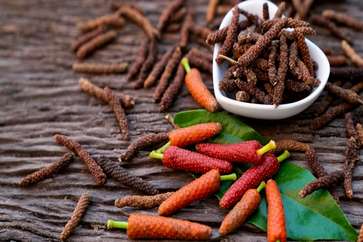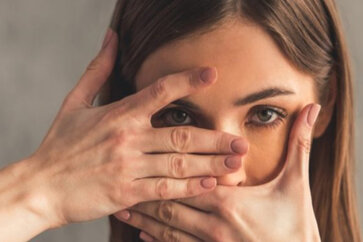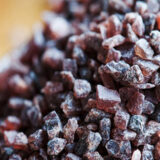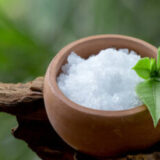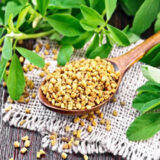Ayurveda – How Does Ayurveda Medicine Work?
 According to Ayurveda, the body is made up of three primary life forces or humor. In Ayurvedic terminology, they are called doshas. The state of balance or balance between these three doshas in the body is called health and the state of imbalance is a disease.
According to Ayurveda, the body is made up of three primary life forces or humor. In Ayurvedic terminology, they are called doshas. The state of balance or balance between these three doshas in the body is called health and the state of imbalance is a disease.
The imbalance can be in one, two, or all three doshas. For example, excess Vata causes arthritis and excess pitta causes heartburn, ulcer, and liver disorders. All the causal factors of internal or external disease, directly or indirectly create an imbalance in the doshas and only then do the symptoms of the disease manifest themselves.
Causal factors can be food, lifestyle, or other activities. All of these factors are affecting one, two, or all three doshas. If you want to stay healthy, it is necessary to know the factors that create an imbalance of the doshas (diet, lifestyle, or daily activities)
You will soon discover that most of the food and activities we do in the modern world are growing from one or more doshas.
Factors responsible for the increase in Vata
- Eating too bitter, astringent, and trying “spicy” foods such as cabbage, cauliflower, broccoli, cabbages, beans, nuts, mushrooms, and raw foods.
- The excess of traveling by any means of transport.
- Staying up late or not sleeping at all.
- Consumption of junk food, frozen food, and food that has been in the microwave.
- Excessive exposure to high noise or loud sounds.
- Watching a lot of television and having great exposure to computers or any other type of electrical device where the waves emitted are strong.
- Engaging in sexual activities too much.
- Excessive imagination, overwork, or sports.
- Taking overly medicinal and stimulant medications.
- Suppression of natural urges such as urination, defecation, sneezing, coughing, etc., and tears.
- Emotions such as fear and pain.
Vata aggravation weakens the nervous system
Other symptoms caused by excess Vata in the body are joint pain, constipation, dry skin, memory loss, palpitations, insomnia, muscle stiffness, weight loss, loss of strength, migraine, vertigo, tremors, pain, fear, depression, etc.
Factors responsible for the increase in Pitta
- Drinking too much tea, coffee, and/or alcohol.
- Smoking excessively.
- Eat salty, acidic, spicy, and highly seasoned foods; eat too much chili, tomatoes, eggplant, or onions.
- Excessive exposure to heat and sun.
- The wrath.
Some of the symptoms caused by excess Pitta in the body are hyperacidity, skin diseases, burning sensation, fever, infections, ulcers, liver disorders, malfunction of the sense organs, fatigue, fibromyalgia, loss of taste, and sleep disorders.
Factors responsible for the increase in Kapha
- Eating in excess of sweet, salty, and acidic flavored foods, fats, fatty and fried foods, ice cream, dairy products, and nuts.
- Sleeping excessively, especially during the day.
- Not doing much physical activity.
- Some of the symptoms caused by excess Kapha in the body are asthma, colds, chest congestion, anorexia, and obesity.
Thus, we can relate all aspects of our lives to these three doshas of Ayurveda. If we have the proper knowledge, we can maintain a balance of these three doshas and avoid many serious problems and stay healthy.
The treatment according to Ayurveda is the balancing of the Tridosha. Upon making a diagnosis, the Ayurvedic physician learns that dosha is out of balance and tries to regain balance with the prescription of some natural medicines, diet, and lifestyle.
Ayurveda: basic principles of treatment
The essence of the treatment is to remove the root cause and give permanent relief. Medicines for the treatment are mainly made up of powders, pills, infusions, medicinal oils, etc. prepared from natural herbs, plants, and minerals.
Charaka, a famous Ayurvedic physician from the 1st-2nd century AD, identified four factors that are essential for the success of medical treatment: the physician, the remedy, the nurse, and the patient.
- The physician must be an expert in theory and practice, skilled and skilled in mind and body. Easy availability, timeliness, usefulness in a variety of forms, and high quality characterize the optimal remedy.
- The best nurse is knowledgeable, skilled, and friendly.
- The ideal patient is brave, able to describe what he feels, remembers all the doctor’s instructions, and follows them carefully. All these qualities will help the patient to recover more easily.
- Along with medicine, a proper diet and lifestyle are also advisable. If you are taking a drug to eliminate the root cause and at the same time you are taking food or have a lifestyle that is causing the disease, then you cannot recover or you will get less relief.
The “Panchakarma” therapy is also used in Ayurveda as a treatment for many diseases. Most of us have many levels of toxins accumulated throughout life, which cannot be released at the same time as they would saturate the excretory organs affecting the body and mind.
Many have become used to these poisons, which have become part of the equilibrium equation. System purification is a long and slow process, requiring many cycles to clear the layers of toxins. You need to be patient with the process and its development.
Way of Ayurvedic Treatment
The basic principles of Ayurvedic treatment are immutable: the way they are applied is different in each case.
1.Treatment is based on measurement
The effect of any particular therapy, on any patient, depends on its dose, which in turn depends on the climate, the doshas involved, the strength of the patient versus the strength of the disease, the age of the patient, and his constitution, the specific syndrome, the social environment of the patient, the objective of the treatment.
The cycle time, including the time of the disease and the seasons, is especially important since the doshas are controlled in a very different depending on both the external time and the impulse of the disease within the microcosm.
2. Treatment is totally individualized
Sometimes so different diseases can share a single therapy, while a single disease can be treated differently in different patients according to the extent of the characteristic elements in question.
Ayurveda teaches in a very systematic and scientific way the fundamental principles, which are important to follow in life both materially and spiritually, the rules of health, the knowledge of the individual constitution of our body, the use of various herbs, minerals, and PanchaKarma therapy.
It can be very safely used by one and all, all over the world, as it promotes good health, prevents disease, and achieves longevity.

